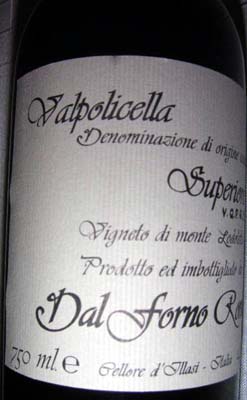Domaine de Torraccia
 Went to a new wine shop & bistro today: Vinarius. The import company itself is actually one of Poland’s veterans, having been founded by Frenchwoman Cécile Bergasse in the late 1990s. Following Cécile’s family connections the original catalogue focused strongly on the Languedoc, and wines such as Château Viranel Rosé (and the Blanc, for which I have a soft spot) and Clos Fantine were big time hits on our market.
Went to a new wine shop & bistro today: Vinarius. The import company itself is actually one of Poland’s veterans, having been founded by Frenchwoman Cécile Bergasse in the late 1990s. Following Cécile’s family connections the original catalogue focused strongly on the Languedoc, and wines such as Château Viranel Rosé (and the Blanc, for which I have a soft spot) and Clos Fantine were big time hits on our market.
Times have changed; growing market competition and family life have pushed Cécile to sell the company to an investor last year. This has surely proved beneficial to the portfolio, which is now overseen by Sławomir Chrzczonowicz, a very competent buyer of French wines (and a good friend). He has added blue chips such as
Château Pibarnon and Mas de Daumas Gassac, and has unearthed lesser-known quality estates such as Château Mourgues du Grès from Nîmes, Château de Brau from Cabardès or Domaine Grossot from Chablis. Now he is looking beyond France, including the overperforming La Purísima co-op from Spanish Yecla whose inexpensive bottlings I like a lot.Today I bumped onto an informal tasting of Corsican wines tutored by Sławomir at the new bar, and there one of my all-time favourites: Domaine de Torraccia. My
personal preference for the wines of Corsica largely sprang from a single bottle of 1991 Oriu, Torraccia’s top bottling, that I tasted at the already mentioned Rouge Gorge wine bar in Paris 4e.The owner of Torraccia Christian Imbert surely belongs to vinous France’s most colourful characters. He spent many years in Chad, and only moved to his wife’s native Corsica in his 40s. The 40 hectares of vineyards are located at Porto-Vecchio, at Corsica’s southernmost tip, overlooking Sardinia. This is not usually considered the best zone for Corsican wine: the island’s major protagonists usually operate in Patrimonio to the north or Ajaccio to the west. Whatever his terroir’s credentials, Imbert has been consistently producing some very exciting wines for two decades now.
I am not terribly fond of his Vermentino-based white (reductive and somewhat fruitless) but the Porto-Vecchio Rosé 2007 as tasted today is excellent: classic, restrained but with good structure and elegant hints of red fruits, it makes a perfect food wine. The focus is, however, on three red wines, none of which see any oak (which Imbert considers an adulteration of the traditional Corsican character). The varietal Niellucciu is light, fresh and gluggable while the 2006 Domaine red, in which Niellucciu is spiced up with some Syrah, Grenache and Sciaccarellu, is a distinctively perfumed, medium-bodied wine with surprising ageing potential (the 1998 was drinking beautifully last year).
If I were to choose one Corsican wine to take on a desert island, though, it would surely be the Porto-Vecchio Cuvée Oriu. Made from oldish terraced Niellucciu with 20% Sciaccarellu, it packs considerably more power and concentration than the Domaine red, and is perhaps the most ageworthy wine from Corsica: the 1998 is mature only now, and the 2001 – a brilliant vintage here – needs more time. Today, we tasted the 2004, which is really young and needs a good half hour of airing: the initial bouquet is taut, herby (call it garrigue if you will), sausagey, even gamey, and the cherry fruit unfolds slowly over a core of earthy minerality. The profile is very traditional: Oriu is a wine that starts quite evolved (there is no oak stabilisation, remember) but has an amazing staying power and shows a wonderful combination of depth and elegance. And make no mistake, this is no Sciaccarellu cerasuolo type as in the
Clos Capitoro 2000 I reviewed back in January: this is a sturdy, peppery lad that can tackle a game dish. Truly a wine to take on a desert island.

 A taster’s treat tonight. A Krug champagne dinner cooked by Poland’s best chef, Paweł Oszczyk at the Régina hotel in Warsaw. Nominally this dinner was for the launch of the Krug Rosé in Poland, although we drank the Grande Cuvée Brut for most of the evening (and started, atypically, with a most pleasant glass of Cloudy Bay Sauvignon Blanc 2007; Cloudy Bay and Krug belong to the world’s most glamorous brand conglomerate, Louis Vuitton Moët Hennessy).
A taster’s treat tonight. A Krug champagne dinner cooked by Poland’s best chef, Paweł Oszczyk at the Régina hotel in Warsaw. Nominally this dinner was for the launch of the Krug Rosé in Poland, although we drank the Grande Cuvée Brut for most of the evening (and started, atypically, with a most pleasant glass of Cloudy Bay Sauvignon Blanc 2007; Cloudy Bay and Krug belong to the world’s most glamorous brand conglomerate, Louis Vuitton Moët Hennessy).
